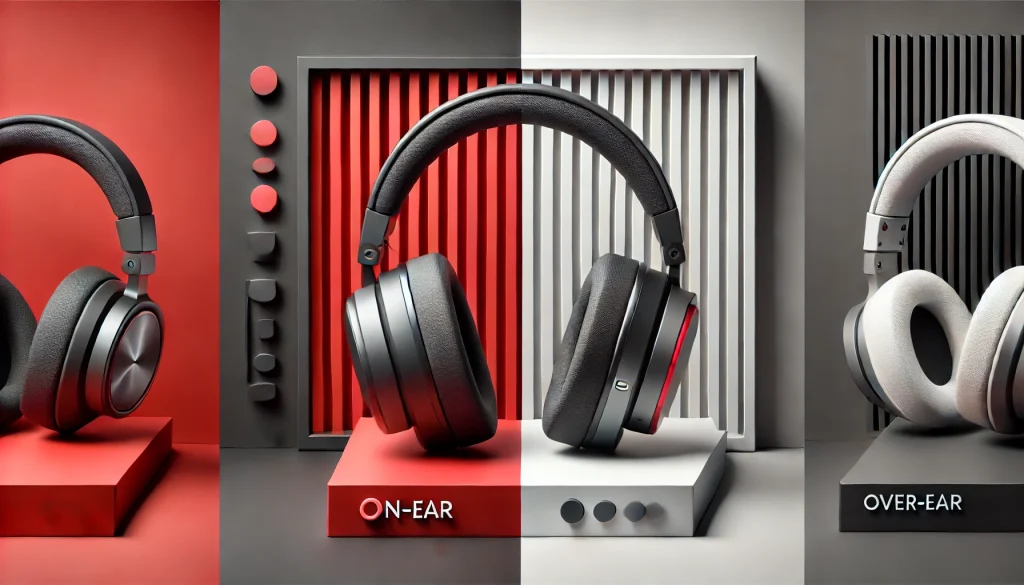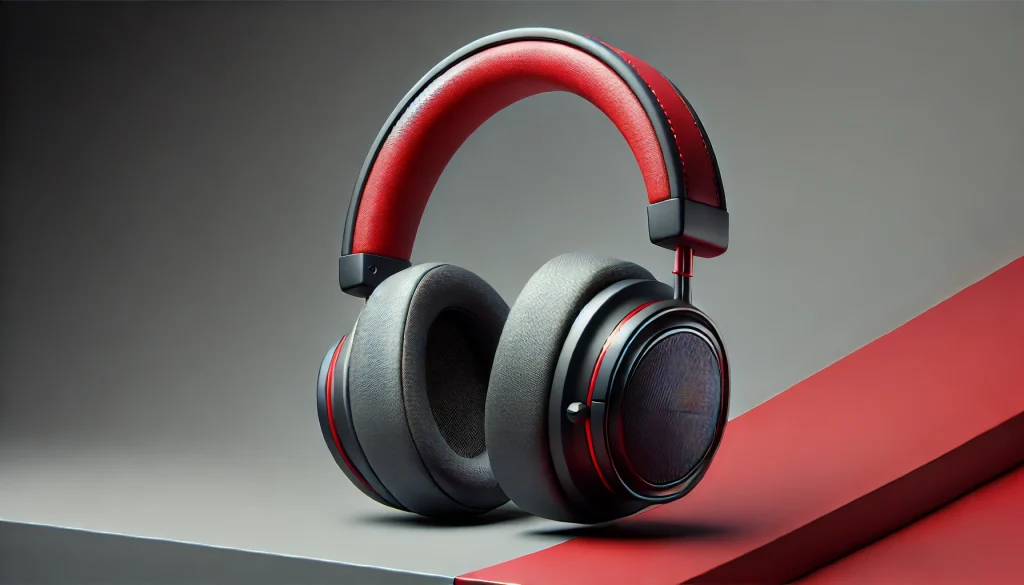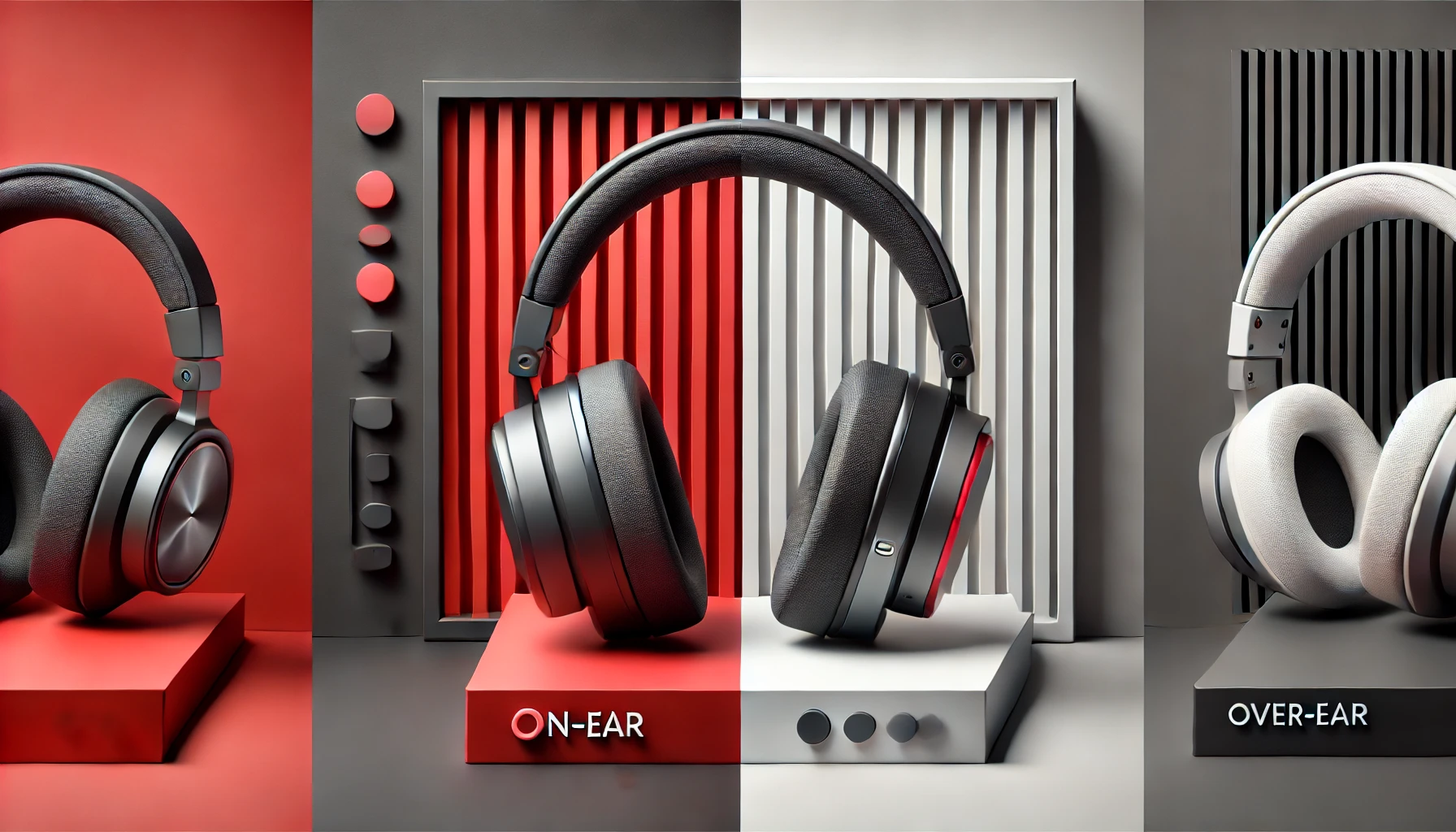
Headphones are an essential part of today’s tech-savvy world, whether for music lovers, gamers, or industry professionals. With a vast selection of types available, each style offers distinct listening experiences and comfort levels. In particular, on-ear vs. over-ear headphones have emerged as two popular options, each suited to different needs and environments. Understanding their unique features, advantages, and potential drawbacks can help you make a more informed choice, whether you’re looking for immersive sound quality or portability.
In this guide, we’ll dive into the differences between on-ear and over-ear headphones, comparing aspects like sound quality, comfort, noise isolation, and best use cases. By the end, you’ll have a clearer perspective on which type might suit your lifestyle and preferences best.
What Are On-Ear Headphones?

On-ear headphones, also known as “supra-aural” headphones, rest directly on the outer ear rather than enveloping it. They are typically smaller than over-ear headphones, making them a convenient option for users seeking a more compact and portable device. On-ear headphones often appeal to commuters, students, and casual listeners due to their balance of portability and sound quality.
Advantages of On-Ear Headphones
- Portability: On-ear headphones are lightweight and often foldable, making them easy to carry in a bag or around the neck.
- Sound Quality: While they may not match the full depth of over-ear headphones, on-ear headphones still provide decent sound quality and bass, especially at their size.
- Breathability: Because they don’t completely cover the ear, they allow airflow, which can be more comfortable during prolonged use.
However, on-ear headphones may not provide as much noise isolation as their over-ear counterparts. Since they don’t fully encase the ears, they tend to let in more ambient sounds, which may not be ideal in noisy environments. Nevertheless, for users prioritizing portability and convenience, on-ear headphones offer a well-rounded experience.
What Are Over-Ear Headphones?

Over-ear headphones, or “circumaural” headphones, fully cover the ears, creating a seal around them. This design is favored by audiophiles and professionals who seek high-quality sound and enhanced noise isolation. Due to their larger size, they’re often more substantial in weight and can be less portable than on-ear models.
Advantages of Over-Ear Headphones
- Superior Sound Quality: Over-ear headphones are known for delivering a more detailed, immersive listening experience, with richer bass and a wider soundstage.
- Enhanced Noise Isolation: The complete ear coverage helps block external noise, making them ideal for studios or noisy environments.
- Comfort for Long Sessions: The ear-encompassing design often makes them more comfortable for long listening sessions, as they don’t press directly on the ears.
However, over-ear headphones can be less practical for travel or on-the-go use. Their larger design may feel cumbersome to some users, and they tend to be less breathable, which might cause discomfort over extended periods in hot conditions.
On Ear vs. Over Ear: A Comparison
When choosing between on-ear and over-ear headphones, understanding how each performs across various metrics is crucial. Here’s a comparison of the most relevant factors:
| Feature | On-Ear Headphones | Over-Ear Headphones |
|---|---|---|
| Sound Quality | Balanced, but may lack deep bass | Rich, full sound with immersive bass |
| Noise Isolation | Moderate; lets in some ambient noise | High; blocks most external sounds |
| Comfort | Lightweight, breathable; may press on ears over time | Encloses ears fully; comfortable for long use |
| Portability | Compact, foldable, easy to carry | Larger, bulkier, less ideal for travel |
| Ideal Use Cases | Commuting, casual listening, moderate noise settings | Studio use, noisy environments, extended listening |
Choosing the Right Headphone Type for Your Needs
The choice between on-ear and over-ear headphones ultimately depends on your specific needs and lifestyle. Here’s how each type might align with various user preferences:
- For Commuters: On-ear headphones are a solid choice due to their portability and convenience. They’re easy to carry and provide decent sound without being overly isolating, which can be safer in urban environments.
- For Audiophiles and Professionals: Over-ear headphones generally provide a more immersive experience, making them ideal for those who value high-fidelity sound and noise isolation. They’re often preferred by sound engineers and avid listeners who prioritize sound quality.
- For Casual Users: If you’re looking for a balance of comfort, portability, and sound, on-ear headphones might be suitable, particularly for listening at home or in relatively quiet settings.
Future Developments in Headphone Technology
As technology advances, the distinction between on-ear and over-ear headphones may continue to evolve. Emerging technologies like adaptive noise cancelation, biometric monitoring, and spatial audio capabilities are being integrated into various headphone designs, enhancing the listening experience. Manufacturers are also exploring materials that make headphones lighter and more durable, bridging the gap between comfort and performance. This trend suggests that users may soon experience the best of both worlds—portability with immersive sound quality—across all headphone types.
Conclusion
When deciding between on-ear vs. over-ear headphones, it’s essential to consider your primary use cases, comfort preferences, and sound quality expectations. On-ear headphones offer portability and moderate sound isolation, while over-ear models provide enhanced sound quality and noise isolation, ideal for focused listening. Ultimately, the best choice is the one that aligns with your lifestyle and listening habits. As headphone technology advances, both styles will continue to improve, providing more options for all types of listeners.
FAQ
What is the main difference between on-ear and over-ear headphones?
On-ear headphones rest on the ears, making them more portable but less isolating. Over-ear headphones fully cover the ears, offering better sound quality and noise isolation.
Which is better for noise isolation: on-ear or over-ear headphones?
Over-ear headphones provide superior noise isolation due to their design, which covers the entire ear, blocking most external sounds.
Are on-ear headphones comfortable for long listening sessions?
While on-ear headphones are lightweight, they can press against the ears, which may cause discomfort over extended periods.
Resources
- Headphone University. In-Ear vs On-Ear
- RTINGS. Over-Ear vs On-Ear Comparison
- Sonos Blog. Headphone Types Compared
- Soundcore Blog. Open-Ear vs In-Ear vs Over-Ear
- Sound Gear Lab. In-Ear vs On-Ear vs Over-Ear

Brijesh Gohil is the founder of Tech Brij, A popular Tech Blog which is focused on Tech tips & Buying Guides. You can follow him on Facebook, Twitter, Google + & LinkedIn.

